The BCAAC has welcomed a new member, got a new website, given feedback on an unprecedented number of applications, and much more this year.
Many thought that the coronavirus pandemic would bring a halt to the intensity of development and consultation going on in the Central London area. But far from it, developers have rather seized the opportunity to table seemingly each and every proposal they have been considering for a decade. At the time of writing, there are over 150 open planning applications within our remit.
But while consultation with developers and Camden is our main raison-d’être, we have also been active in other departments. Two new members, Owen Ward and Sam Reed, have joined our ranks, while our website has been regenerated and expanded. We have created a new interactive map of our conservation areas, recently adding a live planning applications feature which is considerably faster than Camden’s own software.
Planning Applications
We have chosen a few of 2020’s most significant applications.
Belgrove House
An unacceptably monstrous behemoth
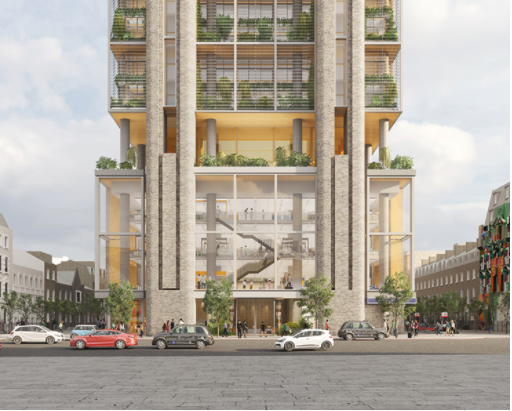
By far the most controversial application this year has been the infamous Belgrove House, an incredible development opposite King’s Cross and St Pancras.
Despite the developers having intentions to develop this site for over a decade, proposals were conveniently tabled and rapidly progressed starting with the emergence of the pandemic.
Belgrove House is exceptional in that it ticks all three boxes guaranteed to make a development vastly unpopular. It sits in a uniquely sensitive and beloved setting, it is simply far too big, and worst of all, it’s absurdly ugly.
The token consultation process only served to further aggravate residents of Bloomsbury and wider London. A concerted effort has been made by the developers to sell the public benefit of the proposal, while every criticism has been invalidated, waved away, or simply ignored.
We even saw that those behind the application were playing silly buggers with Camden’s planners on heritage matters.
We hold out hope that Camden will refuse this application. With the high pressure for development and magnitude of proposals currently coming forward, Camden do have the luxury of refusing some applications this year. And of all developments to be fought throughout the borough, this surely has to be the prime contender.
But being refused would not be the end of the story. Expect Belgrove House to continue to be a hot topic for years to come.
Lethaby Building and Red Lion Square
Responsible development, if not slightly too big
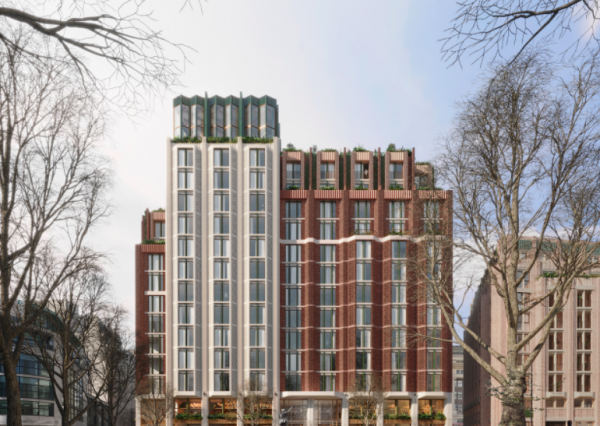
We were consulted regarding comprehensive redevelopment proposals to the west of Red Lion square, including alterations to the Grade II* Lethaby Building on Southampton Row.
We were satisfied with the proposals, which quite evidently reflected local architectural vernacular and style, while respecting and restoring the Lethaby Building. Of course the developer sought to reach the upper ceiling and beyond when it came to sheer scale. But it just goes to show that when a big building is architecturally sound, it meets with much less opposition, and even elicits support in some quarters.
The development opens up a new walking route, reinstating an old street between Red Lion Square and Southampton Row. Given the oppressive nature of modern development in this area, the added permeability was sorely needed and a welcome addition.
North Crescent and Alfred Mews
A pleasant consultation experience and a responsible approach to redevelopment
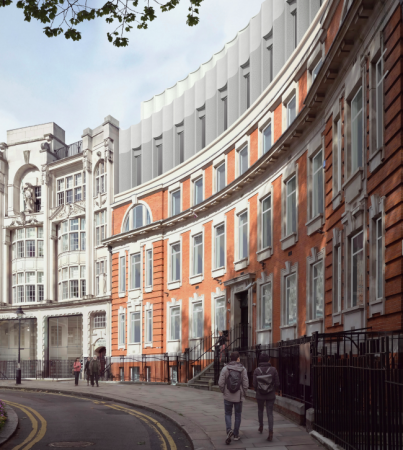
The BCAAC have been engaged in thorough pre-application discussions with a developer of North Crescent and Alfred Mews to the rear, in Fitzrovia / west Bloomsbury.
We have been positively refreshed by the approach taken by these developers, to consult early and thoroughly with us on their proposals before fully approaching Camden.
While in our view the proposals increase height to slightly too great a degree, and the design of the proposals could do with some refinement, we are overall supportive of the development and approach taken to consultation.
We will continue to consult on this in 2021, likely seeing an application being made early next year.
Selkirk House (Travelodge)
A veritable skyscraper, and a devious approach to consultation
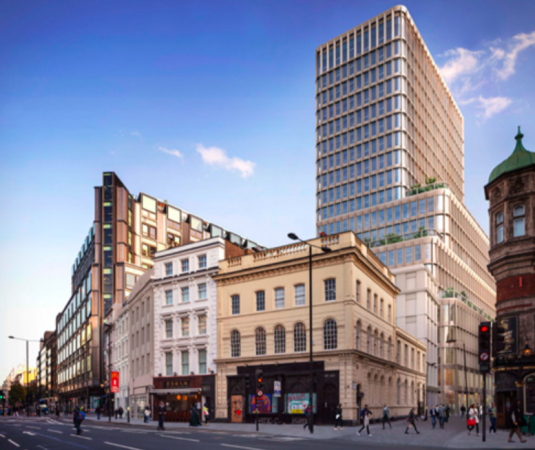
Incredible plans for a veritable skyscraper have recently been revealed at the old Travelodge site, on High Holborn and just to the south of the British Museum.
The devious developers of this site chose to withhold details of the tower from us for a very long time, instead waxing eloquent on the contribution made to the street environment. And now they have refused to release details of the street environment contribution, instead releasing images of the tower.
This is another one we hope Camden will likely be refusing. Earlier in the year, it was indicated to us that this building was too tall. We also heard that the developers had falsely represented our views as supporting their scheme before they had even revealed it to us.
Opposition bordering on outrage has been shown by communities in this area. Compounded with perhaps the worst development in recent times – the ‘Post Building’ – this development would forever change the character of the area, and set a very real grave precedent for future development.
247 Tottenham Court Road
A very poor showing from Camden officers, spoiling a development that could have been overwhelmingly positive
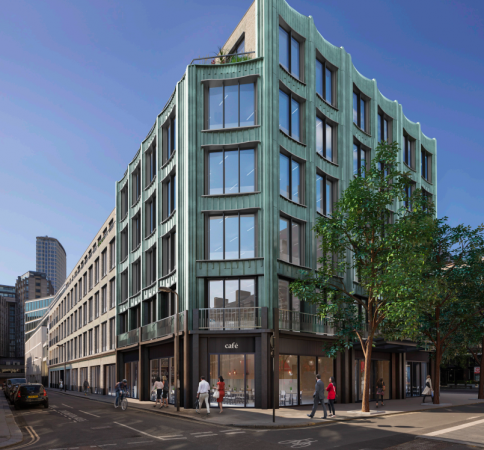
An excellent opportunity for responsible redevelopment at 247 Tottenham Court Road has unnecessarily caused backlash from the community, while incomprehensible actions from Camden officers have left a very sour taste in the mouths of all those concerned.
The proposals for this site we initially thought to be positive, only requiring some small refinements in terms of design, materials, and massing. But we were then concerned to hear that there were plans to demolish a number of interesting and very characterful buildings just behind Bedford Square, on Morwell Street.
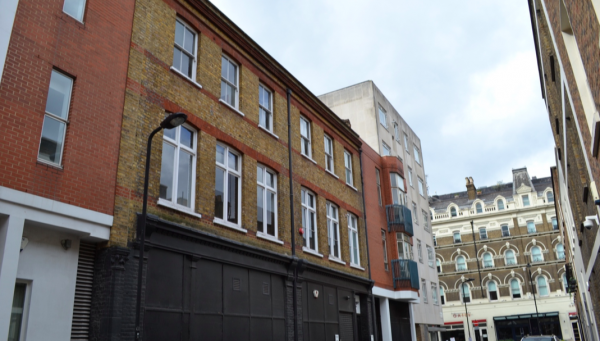
Among these was 2-3 Morwell Street, a Victorian terrace exemplary of the kind of development common in this area, and reflective of many full terraces throughout the Bloomsbury CA, while also directly related to the buildings opposite and on Bayley Street.
We then found that the building had been left outside the Bloomsbury CA, triggering us to request an urgent review of the CA boundary.
The very point of a CAAC is to utilise the knowledge of enthusiasts and professionals living in a conservation area, which often is so comprehensive that it cannot be surpassed by any number of expensive consultants.
With this knowledge in hand, there was no doubt that this building should be included within the Bloomsbury CA, and also considered a ‘positive contributor’. Indeed, an application could even have been made for inclusion of the entire block. We put forward our case strongly.
But from the beginning it was clear Camden’s officers were only interested in fobbing us off and ignoring our claims, steamrolling the application through pre-application. They only bothered to investigate our request once councillors put significant pressure on them to do so.
But then incomprehensibly, officers decided to concentrate only on whether the building contained ‘shopfronts of merit’, and when it was discovered that they did not, their inclusion was refused on these grounds, while all our other grounds were simply ignored.
As a CAAC it is our job to properly advocate the views of residents and amenity societies, so we have been left with little choice but to submit a full complaint to the Executive Director for Supporting Communities, and will take this to the Ombudsman if necessary. It is a prime example of how the planning process can be irrevocably spoiled by a complacent and rather ignorant attitude shown by Camden officers on occasion, who sometimes don’t take their responsibilities quite seriously enough in favour of ‘just getting the job done’. Hopefully this approach to planning will continue to die out and remain the exception rather than the rule in 2021.
52 Tottenham Street
A ‘fake’ Georgian terrace and a bookcase to replace it
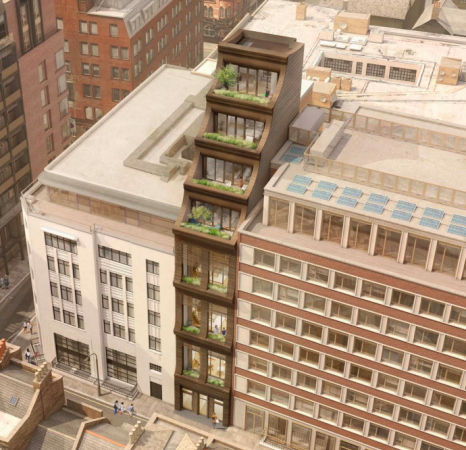
We were notified about a concerning proposal to demolish a single Georgian terrace on Tottenham Street and replace it with a totally uncharacteristic building, which one of our members believes represents a scaled version of his grandmother’s bookcase.
The developer claimed that they had ‘established’ the Georgian terrace on the site was ‘a largely inaccurate rebuild‘, and thus demolition was acceptable.
Four of our members went out to visit the site to verify the claims. We eventually agreed that it was a rebuild, and that not much could be done to save it.
But significant concerns were raised about the replacement, its immediate effect upon the local area, and a new precedent set for this block and the surrounding area. Evidently, if a building like this is permitted to breach the accepted limit on height, many other developments in the area will take the same line of attack.
We await to see whether the Fitzrovia ‘bookcase’ will be approved, following our objection on behalf of the Charlotte Street CAAC.
Other Activities
The BCAAC were also involved in a number of other activities and consultation exercises concerning the Bloomsbury Conservation Areas.
Area Allocation Policy Consultation
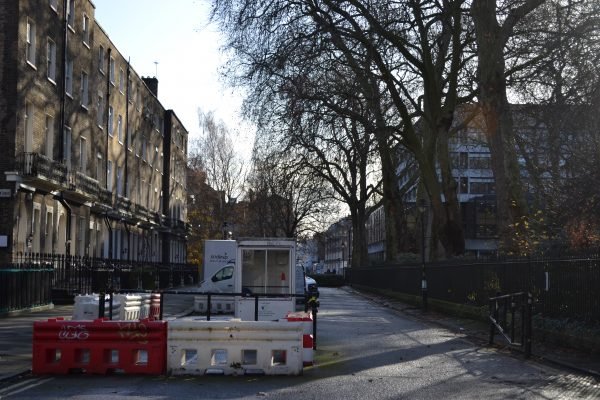
The BCAAC gave a thorough consultation response for Camden’s 2019 area allocation brief, a policy document which goes through development sites one-by-one and specifies an outline for future proposals.
We suggested quite a number of policies, hoping to ensure that future development will largely respect the prevailing scale and vernacular of our conservation areas.
We also raised concerns in the brief about the state of UCL’s Bloomsbury campus and their aggressive expansion into wider Bloomsbury. We supported the apparent attempt to confine UCL’s development enterprises to their historic campus area, while also supporting development that properly reinstated Woburn and Torrington Squares. Torrington Square in particular has reached a terrible state of repair, while once being a full Georgian square, is now little more than a mix between a disused car park and a dumping ground for university clutter. We suggested that this space be reinstated as a full Georgian garden square, with historic railings and a garden following the boundary of the original.
A Former Foreign Secretary in Tavistock Square
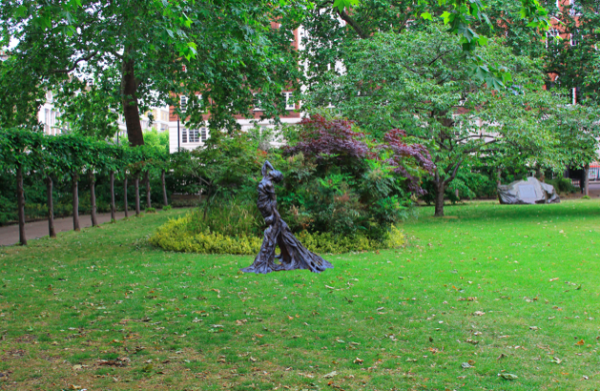
We were involved with a consultation on the addition of a sculpture to Tavistock Square. Backed by Jack Straw, the former Foreign Secretary, we discussed with his organisation the addition of a sculpture commemorating the suffering of Vietnamese war victims.
Jo Hurford expressed concerns about the loss of green space to accommodate the statue, while members also expressed concerns about Tavistock Square becoming over-cluttered with monuments. This point was particularly pertinent given the recent loss of an entire square at Euston and further loss of green space and trees around the HS2 development site.
We also failed to find any connection between the statue and the character and history of Bloomsbury. While Tavistock Square has a clear connection with international conflict, every monument currently there also has a connection with Bloomsbury.
Concerns were also raised about the funding behind the project. When local residents of Vietnamese heritage enquired about whether funding for the project came from communist sources ultimately behind the atrocities being commemorated, the organisation was unable to give a clear answer.
We thus opposed the addition of this statue, and await to see whether an application is lodged.
Filth, Clutter, and Ignorant Councillors
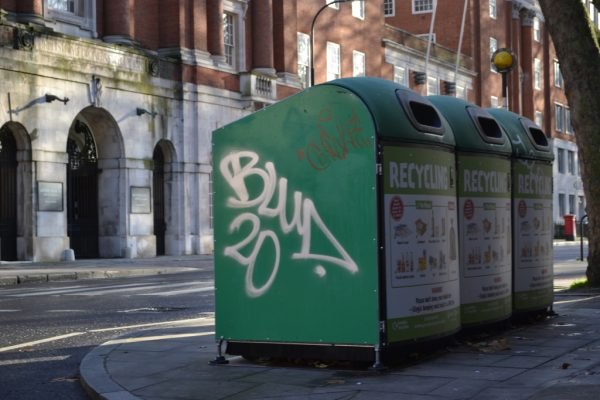
Not so much of an activity as a lack thereof, the Bloomsbury Conservation Areas are suffering the continuing affliction of almost complete ignorance from many of those charged with protecting its world-famous heritage and environment.
In particular, Councillor Adam Harrison, Bloomsbury Ward Councillor and ‘Environment Chief’, has imposed a number of absurd schemes throughout the area that have done nothing except clutter the conservation areas and contribute further to a gradual degradation of its environment. Not only being hit with the scourge of dockless bicycles this year, we have had docks for dockless bicycles, along with a great many empty bicycle racks, un-consulted bicycle shelters, and a great deal more. The man is clearly obsessed with bicycles.
Litter, fly-tipping, vandalism, and other filth-related activities are seemingly at an all time high, but Cllr Harrison has batted away longstanding calls for a review of Veolia’s contract.
We have been involved in attempting to remedy individual cases of greatest concern while supporting others in their campaigns against the local authority rapidly gaining a reputation for being the filthiest in the country.
New Members
We have also welcomed a new member this year Sam Reed.
He is a member of the Friends of Argyle Square, works for a development company, and has lived in Bloomsbury his entire life.
We have also sought the membership of a number of experts working and living throughout the Bloomsbury Conservation Areas and may welcome them in 2021, in an effort to increase our activities and depth of consultation.
Clean up Woburn Walk!

The BCAAC have been involved in trying to remedy a perennial problem, relating to the infamous shopkeeper of 4 Woburn Walk.
Woburn Walk is an exceptional street of complete Georgian shopfronts, being the only planned Georgian high street in Camden, and one of only two in all of London. But despite this, and all the buildings being Grade II* listed, the notoriously antisocial shop-owner of 4 Woburn Walk has been cluttering her own shopfront – and those of others! – to an increasingly unacceptable degree.
This problem has been going on for as long as anyone can remember – but officers and members have to tread carefully when trying to address this problem. The shopkeeper has been known to call 999 and complain of racial harassment when confronted – and even had our former chairman arrested on such spurious charges.
Despite illegally using the public realm for private ends while also fly-tipping her business waste in community recycling bins, officers have been unwilling to confront the shop-owner – through a mix of fear and complacency.
We have been trying to get Camden to take action against this shop-owner this year, arguing the clutter of the shopfront causes an unacceptable degree of harm to the historic environment and that her actions are clearly having an effect upon other shop-owners, who are starting to follow suit. Our case has been aided by the shop-owner actually placing her wares on other shops’ premises while lockdown has meant they cannot open.
However very typically of Camden’s approach, they claimed that photos of the shop-owner’s stands on another’s private land was not sufficient evidence to prove that the shop-owner’s stands were placed on that private land… by the shop-owner herself.
Evidently 4 Woburn Walk is on a quest to eventually dominate all of Bloomsbury with items of internationally significant tackiness.
We are going to continue trying to clamp down on this unacceptable behaviour through 2021.
A Georgian Terrace Saved
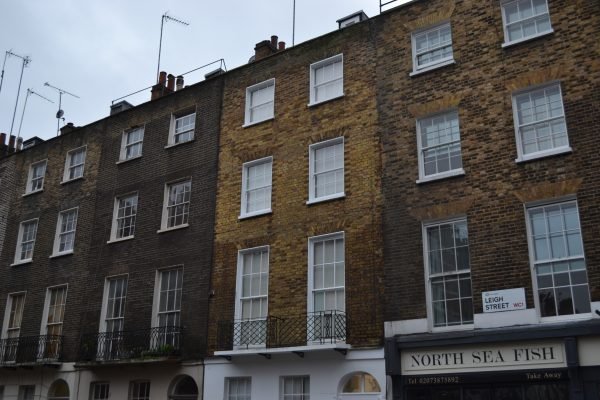
The usefulness of a locally-based conservation committee was demonstrated when a Georgian terrace on Leigh Street was saved from irreparable harm, when a member passing by noticed it was being jet-washed illegally. Notifying Camden immediately, officers were sent out to halt the work within hours, saving the facade from being damaged beyond repair.
Camden officers are now assessing whether action should be taken to ‘re-dirty’ some of the bricks worst-affected, to preserve the uniform character of the street.
Web Activities
Over 2020 the web presence of the BCAAC has been steadily increasing, and the reach of our news and campaigns has had rather an unprecedented impact as a result. While our activities have been thoroughly covered locally in the Camden New Journal, statements released on Belgrove House were covered and quoted in Architects’ Journal, the Financial Times, and The Times, among a number of other specialist news outlets.
This has perhaps been due to our new optimised website, which now scores so highly on Google’s search rankings that searching about Belgrove House returns a number of BCAAC articles, outperforming the developers’ own website and sites such as The Times’.
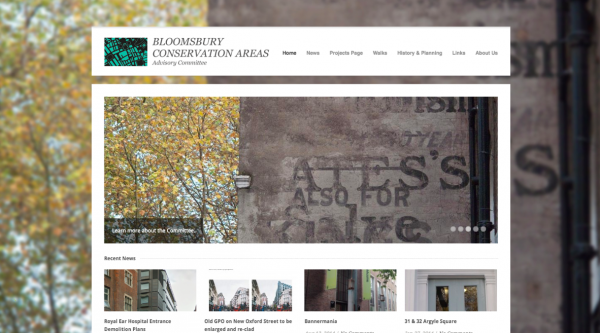
The website has also greatly expanded in terms of material and functionality, along with sheer speed – increasing from a score of 24% to 98% on Google’s assessment. Most of this is thanks to a complete rebuild of the website from the ground up, while still preserving the essential aspects and appearance of the original website, which was some ten years old – a lifetime in website terms.
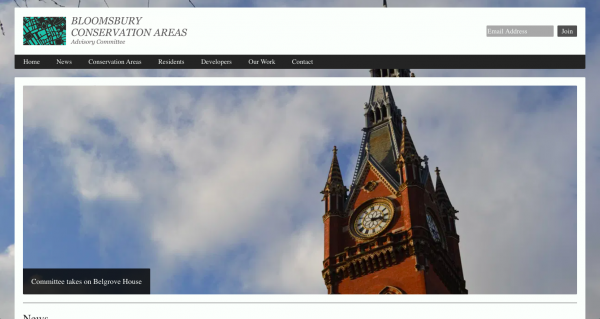
We have also created a new interactive map, integrating the appraisals of our conservation areas with it, and adding a live planning application feature which is far faster and easier to use than Camden’s own planning map.
It is however not near finished and doesn’t work properly on mobile devices. Work will continue on both the main website and the map throughout 2021.